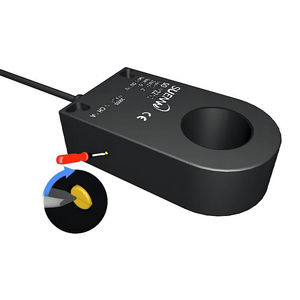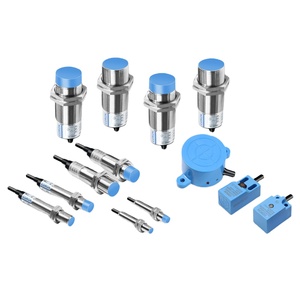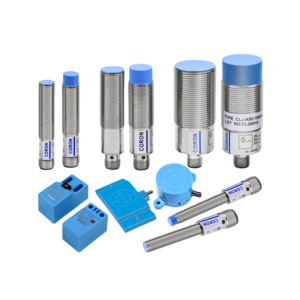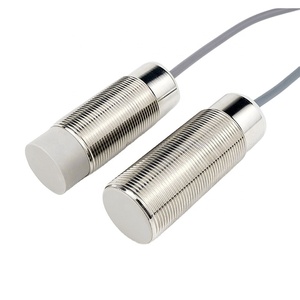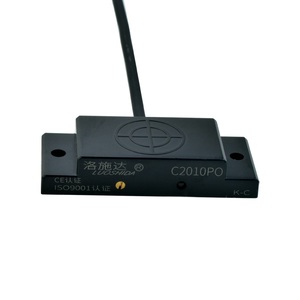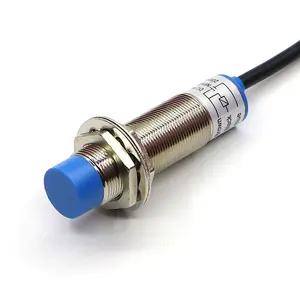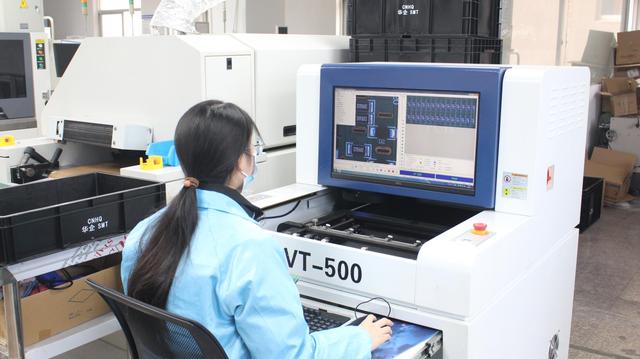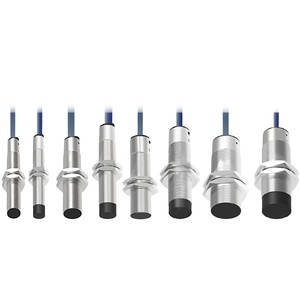Capacitive Proximity Sensor




 Top sponsor listing
Top sponsor listing



 1/1
1/1








 1/3
1/3



 0
0








 1/31
1/31







 1/26
1/26


 0
0



 0
0





 1/2
1/2




 1/3
1/3

 CN
CN







 1/3
1/3








 1/13
1/13






 1/6
1/6



 0
0










 1/3
1/3








 1/24
1/24





 1/3
1/3
About capacitive proximity sensor
Where to Find Capacitive Proximity Sensor Suppliers?
China remains a dominant force in the global capacitive proximity sensor manufacturing sector, with key production hubs concentrated in Zhejiang and Guangdong provinces. Yueqing in Zhejiang hosts a dense cluster of electrical component manufacturers, offering vertically integrated supply chains that reduce material sourcing lead times by 20–30%. Shenzhen-based suppliers in Guangdong leverage advanced SMT lines and automation expertise, enabling rapid prototyping and high-volume production for export markets.
These industrial ecosystems support streamlined operations through co-located PCB fabrication, injection molding, and metal stamping facilities. Suppliers benefit from localized access to raw materials such as nickel-plated brass, PBT housings, and copper wiring, contributing to 15–25% lower production costs compared to European or North American alternatives. Buyers gain operational agility with average lead times of 7–15 days for standard orders and scalable output ranging from hundreds to tens of thousands of units monthly.
How to Choose Capacitive Proximity Sensor Suppliers?
Effective supplier selection requires systematic evaluation across technical, operational, and transactional dimensions:
Technical Capability Verification
Confirm product compatibility with industry-standard specifications including IP67/IP68 ratings, operating voltages (10–30V DC), and detection ranges (1–40mm depending on model). Review available output types (NPN/PNP, NO/NC configurations) and housing materials (flush vs. non-flush designs). Prioritize suppliers listing comprehensive parameter sheets covering hysteresis, response time (<2ms typical), and temperature tolerance (-25°C to +70°C).
Production & Customization Capacity
Assess customization readiness through documented offerings such as:
- Labeling and branding (logo printing, packaging design)
- Wire length adjustments (standard: 2m; customizable up to 10m)
- Housing diameter variations (M8, M12, M18, M30)
- Output configuration (PNP/NPN, normally open/closed)
- Material upgrades (stainless steel, extended waterproofing)
Cross-reference customization claims with actual product listings and verify whether engineering support is available for non-standard requests.
Transaction Reliability Indicators
Analyze performance metrics derived from verified transaction histories:
- On-time delivery rate ≥95% indicates logistical reliability
- Response time ≤2 hours reflects operational responsiveness
- Reorder rate >30% suggests customer satisfaction and product consistency
- Minimum order quantities (MOQs) typically range from 1–10 pieces for stock items
Suppliers with online revenue exceeding US $80,000 annually demonstrate market validation and order volume sustainability.
What Are the Best Capacitive Proximity Sensor Suppliers?
| Company Name | Main Products (Listings) | On-Time Delivery | Avg. Response | Reorder Rate | Online Revenue | Customization Options | Key Strengths |
|---|---|---|---|---|---|---|---|
| Yueqing Bxuan Electrical Co., Ltd. | Proximity Sensors (519) | 98% | ≤4h | 15% | US $90,000+ | Yes | Broad product range, overload protection, waterproof models |
| Shenzhen Chengpai Technology Co., Ltd. | Proximity Sensors (215) | 100% | ≤2h | <15% | US $8,000+ | No | Fast response, competitive pricing ($0.90–2.40/unit) |
| Shenzhen Qida Electronic Company Ltd. | Proximity Sensors (Original/OEM) | 95% | ≤1h | 22% | US $120,000+ | Yes | OEM distribution, original brand sourcing, fast lead times |
| Yueqing Tuolong Electric Factory | Proximity Sensors (13,137) | 100% | ≤1h | 43% | US $80,000+ | No | Largest catalog, high reorder rate, consistent delivery |
| Chaorong Electronics (Wuhan) Co., Ltd. | Proximity Sensors (Multiple Models) | 100% | ≤6h | 37% | US $30,000+ | Yes | Design flexibility, color/material/logo customization |
Performance Analysis
Yueqing Tuolong Electric Factory stands out with the highest product availability and a 43% reorder rate, indicating strong market acceptance and reliability. Shenzhen Qida Electronic commands premium pricing due to its focus on original and upgraded sensor models, backed by the highest annual online revenue. Chaorong Electronics offers notable design flexibility, supporting client-specific branding and material modifications. While Shenzhen Chengpai Technology provides the lowest price point starting at $0.90 per unit, its limited customization and lower reorder rate suggest a transactional rather than relational buyer profile. Suppliers with sub-2-hour response times—particularly Shenzhen Qida and Yueqing Tuolong—demonstrate superior customer engagement critical for urgent procurement cycles.
FAQs
How to verify capacitive proximity sensor supplier reliability?
Evaluate on-time delivery performance (target ≥95%), response speed, and reorder rates as behavioral indicators of service quality. Request product certifications such as CE, RoHS, or ISO 9001 where applicable, and confirm compliance through documentation. For high-volume contracts, conduct virtual factory audits to assess production lines, testing procedures, and inventory management systems.
What is the typical lead time for capacitive proximity sensors?
Standard orders are typically fulfilled within 7–15 days. Customized configurations may require 15–25 days depending on complexity. Express shipping options can deliver samples globally within 3–7 days via air freight.
Do suppliers offer free samples?
Sample policies vary. Some suppliers provide paid samples with fees redeemable against future bulk orders. Units typically cost between $2–$15 each, depending on specifications and brand origin.
Can I customize sensor parameters and branding?
Yes, select suppliers support customization of wire length, output type, housing size, and labeling. Logo printing, packaging design, and color coding are available through manufacturers like Yueqing Bxuan and Chaorong Electronics. Technical modifications require direct consultation with the engineering team.
What are common MOQ requirements?
MOQs range from 1 piece for sample testing to 5–10 pieces for discounted pricing. High-volume buyers can negotiate tiered pricing starting at 100+ units, with unit costs decreasing significantly beyond 1,000 pieces.





